Medieval music encompasses the sacred and secular music of Western Europe during the Middle Ages, from approximately the 6th to 15th centuries. It is the first and longest major era of Western classical music and is followed by the Renaissance music; the two eras comprise what musicologists generally term as early music, preceding the common practice period. Following the traditional division of the Middle Ages, medieval music can be divided into Early (500–1000), High (1000–1300), and Late (1300–1400) medieval music.

The history of the Kingdom of Portugal from the Illustrious Generation of the early 15th century to the fall of the House of Aviz in the late 16th century has been named the "Portuguese golden age" and the "Portuguese Renaissance". During this period, Portugal was the first European power to begin building a colonial empire as during the Age of Exploration Portuguese sailors and explorers discovered an eastern route to India as well as several Atlantic archipelagos and colonized the African coast and Brazil. They also explored the Indian Ocean and established trading routes throughout most of southern Asia, sending the first direct European maritime trade and diplomatic missions to Ming China and to Japan, at the same time installing trading posts and the most important colony: Portuguese Macau. The Portuguese Renaissance produced a plethora of poets, historians, critics, theologians, and moralists. The Cancioneiro Geral by Garcia de Resende is taken to mark the transition from Old Portuguese to the modern Portuguese language.
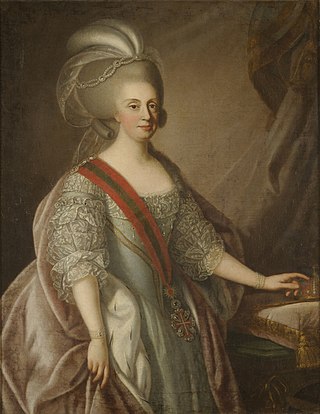
Dona Maria I was Queen of Portugal from 24 February 1777 until her death in 1816. Known as Maria the Pious in Portugal and Maria the Mad in Brazil, she was the first undisputed queen regnant of Portugal and the first monarch of Brazil.

Galician–Portuguese, also known as Old Galician–Portuguese, Old Galician or Old Portuguese, Medieval Galician or Medieval Portuguese when referring to the history of each modern language, was a West Iberian Romance language spoken in the Middle Ages, in the northwest area of the Iberian Peninsula. Alternatively, it can be considered a historical period of the Galician, Fala, and Portuguese languages.
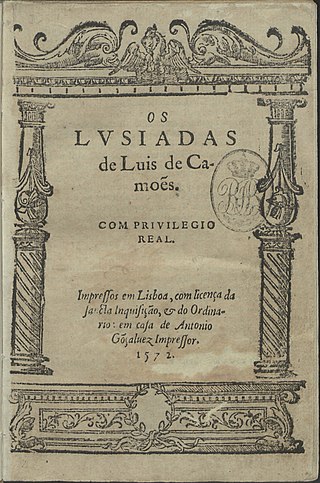
Portuguese literature is literature written in the Portuguese language, from the Portuguese-speaking world. It can refer to Lusophone literature written by authors from Portugal, Brazil, Angola, Mozambique, and other Community of Portuguese Language Countries. This article focuses on Portuguese literature sensu stricto, that is, literature from the country of Portugal.

Saudade is an emotional state of melancholic or profoundly nostalgic longing for a beloved yet absent something or someone. It derives from the Latin word for solitude. It is often associated with a repressed understanding that one might never encounter the object of longing ever again. It is a recollection of feelings, experiences, places, or events, often elusive, that cause a sense of separation from the exciting, pleasant, or joyous sensations they once caused. Duarte Nunes Leão defines saudade as, "Memory of something with a desire for it."

Belém is a freguesia and district of Lisbon, the capital of Portugal. Belém is located in western Lisbon, to the west of Ajuda and Alcântara and directly east of Lisbon's border with Oeiras. Belém is famous as a museum district, as the home of many of the most notable monuments of Lisbon and Portugal alike, such as the Belém Tower, the Jerónimos Monastery, the Padrão dos Descobrimentos, and Belém Palace. The population in 2011 was 16,528.

On the Soul is a major treatise written by Aristotle c. 350 BC. His discussion centres on the kinds of souls possessed by different kinds of living things, distinguished by their different operations. Thus plants have the capacity for nourishment and reproduction, the minimum that must be possessed by any kind of living organism. Lower animals have, in addition, the powers of sense-perception and self-motion (action). Humans have all these as well as intellect.

Martin Codax or Codaz, Martín Codax or Martim Codax was a Galician medieval joglar, possibly from Vigo, Galicia in present-day Spain. He may have been active during the middle of the thirteenth century, judging from scriptological analysis. He is one of only two out of a total of 88 authors of cantigas d'amigo who used only the archaic strophic form aaB. He employed an archaic rhyme scheme whereby i~o / a~o were used in alternating strophes. In addition Martin Codax consistently utilised a strict parallelistic technique known as leixa-pren. There is no documentary biographical information concerning the poet, dating the work at present remains based on theoretical analysis of the text.

The Palace of Ajuda is a neoclassical monument in the civil parish of Ajuda in the city of Lisbon, central Portugal. Built on the site of a temporary wooden building constructed to house the royal family after the 1755 earthquake and tsunami, it was originally begun by architect Manuel Caetano de Sousa, who planned a late Baroque-Rococo building. Later, it was entrusted to José da Costa e Silva and Francisco Xavier Fabri, who planned a magnificent building in the neoclassical style.
Portugal has a long music history, beginning around the year 600 C.E, which accompanied and strongly contributed to the development of the music history in Europe.

Cantiga de amigo or cantiga d'amigo, literally "friend song", is a genre of medieval lyric poetry, more specifically the Galician-Portuguese lyric, apparently rooted in a female-voiced song tradition native to the northwest quadrant of the Iberian Peninsula.
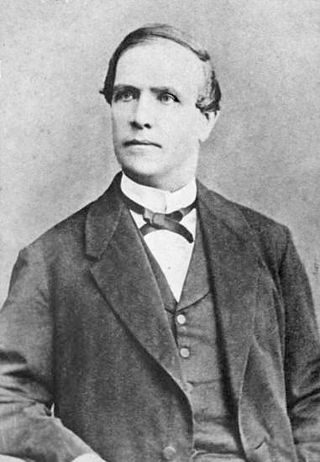
Francisco Adolfo de Varnhagen, Viscount of Porto Seguro, was a Brazilian diplomat and historian. He is the patron of the 39th chair of the Brazilian Academy of Letters. He is considered "the father of modern Brazilian historical scholarship."

Carolina Michaëlis de Vasconcelos, born Karoline Michaelis was a German-Portuguese romanist.

Alexandre Rodrigues Ferreira was a Portuguese naturalist born in Brazil. He undertook an extensive journey which crossed the interior of the Amazon Basin to Mato Grosso, between 1783 and 1792. During this journey, he described the agriculture, flora, fauna, and native inhabitants.

The Cancioneiro da Ajuda is a collection of Galician-Portuguese lyric poems probably dating from the last quarter of the 13th-century. It is the oldest of the Galician-Portuguese cancioneiros with secular music.
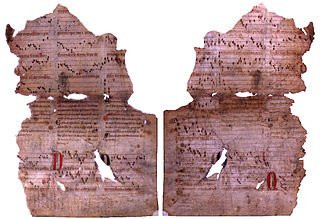
The Pergaminho Sharrer is a mediaeval parchment fragment containing seven songs by King Denis of Portugal, with lyrics in the Galician-Portuguese language and musical notation.
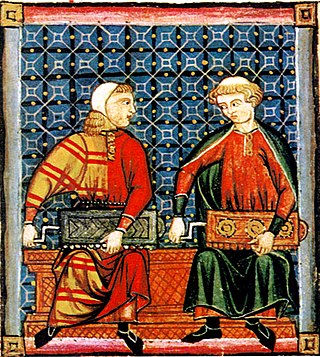
In the Middle Ages, the Galician-Portuguese lyric, also known as trovadorismo in Portugal and trobadorismo in Galicia, was a lyric poetic school or movement. All told, there are around 1680 texts in the so-called secular lyric or lírica profana. At the time Galician-Portuguese was the language used in nearly all of Iberia for lyric poetry. From this language derives both modern Galician and Portuguese. The school, which was influenced to some extent by the Occitan troubadours, is first documented at the end of the twelfth century and lasted until the middle of the fourteenth, with its zenith coming in the middle of the thirteenth century, centered on the person of Alfonso X, The Wise King. It is the earliest known poetic movement in Galicia or Portugal and represents not only the beginnings of but one of the high points of poetic history in both countries and in Medieval Europe. Modern Galicia has seen a revival movement called neotrobadorismo.

The Cancioneiro Musical de Belém or simply Cancioneiro de Belém is a Portuguese Renaissance manuscript from the beginning of the 17th century.

The Portuguese Renaissance refers to the cultural and artistic movement in Portugal during the 15th and 16th centuries. Though the movement coincided with the Spanish and Italian Renaissances, the Portuguese Renaissance was largely separate from other European Renaissances and instead was extremely important in opening Europe to the unknown and bringing a more worldly view to those European Renaissances, as at the time the Portuguese Empire spanned the globe.

















